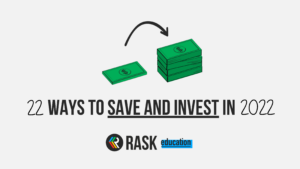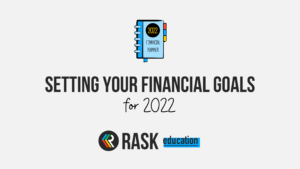Owen Rask explains how to compare Superannuation funds and what to look for before you change funds.
Long before I started the Rask network I was paid to review and interview Australia’s top fund managers.
Magellan, Antipodes, Perpetual… the list goes on.
My job was to judge whether — or not — these funds were worthy of investing people’s money. I would look at their strategy, team, past performance, their investments and so on.
While it sounds straightforward, it’s not good enough to look at a fund’s past performance and say, “Which was best last year? I choose that one!”
Picking tomorrow’s top-performing funds is a hard thing to do. I was trying to pick the stock picker who would pick the best stocks. It sounds like a scene from Leonardo Dicaprio’s movie, Inception.
Indeed, research from SPIVA found that more than 70% of managed investment funds did worse than the market average in the 10 years to June 30th, 2017.
Who Cares
Most Aussies might never pick a managed fund. But everyone has to choose a Super fund, which are quite similar.
Whether it’s a ‘default’ Super fund chosen by an employer or a fund recommended by a financial adviser or friend.
1. (Not-so) Super Fees
Sorry, my caps lock got stuck. But seriously, you’ve probably heard the line, if you pay 1% more in fees you’ll have 20% less in 30 years.
To put it less eloquently and quote the comedian, John Oliver, “think of fees like termites: they’re tiny, they’re barely noticeable, and they can eat away at your f$%king future.”
To me, it makes no sense to pay more than 1% in fees per year. The Government’s recent draft review of the Super system found an average full-time worker could miss out on $100,000 at retirement if they pay just 0.5% more in fees.
See: Super Fees & Statements Explained
2. Take Care With Insurance
Super funds can hold insurance policies like life, disability and income protection on behalf of their members. Sometimes, these insurances can be much cheaper than holding insurance outside of Super. That’s one of the reasons I hold my insurance inside Super.
Some experts say under-25’s are getting burned by default insurance policies. But I think everyone who has some level of financial responsibility (kids, a mortgage, debts, etc.) should have insurance cover — regardless of age.
If you hold (and rely on) insurance inside Super and plan to change funds pay careful attention to what you’re covered for; what you could be paying in a new fund (get an estimate before switching); and any exclusions, waiting periods or restricted/limited cover.
If you change Super funds you could lose some or all of your cover.
3. Investment Options Explained
Let’s face it, if we’re planning for retirement we likely have more than a few years to invest.
Looking back over time, if an investor had a long-term horizon it paid dividends (literally) to invest in growth assets like Australian and international shares, property and private equity.
However, there are a few things to be mindful of:
- During the GFC, international property and shares (of all stripes) fell very hard. And make no mistake, maintaining your ‘cool’ and sticking to a growth strategy is very difficult when your life’s savings are 20% or 30% underwater. If you can’t imagine yourself coping with that amount of stress, a high allocation to shares (click here to see what that looks like) might be too much risk.
- Don’t be fooled by the strategy name (e.g. “high growth” or “defensive”). Go to the Super fund’s website and look under the hood at the percentage allocated to shares, property and private equity. Those are the most common ‘growth’ investments. A higher growth investment option would have more than 70% invested in these areas.
- Judge past performance using a five-year track record or longer. Anything less than 3 years and the Super fund could be ‘cherry picking’ its latest numbers. What’s good performance? Between 2005 and 2016, the Government Super review found that not-for-profit (industry funds) returned an average of 6.8% per year after fees. Obviously, the best-performing funds returned more.
See: “How To Choose Superannuation Investment Options”
The Bottom Line
Picking Super funds isn’t easy and no-one knows for certain what the future holds. But there are only a few things you can control: fees for the fund, the costs for good quality insurance protection, and where your money is invested.
If you focus on getting those right, you should be on your way to short-listing the good Super funds in no time. It might only take a few minutes to compare your fund against others. That’s a small time investment for a lifetime of potentially better performance.
[ls_content_block id=”27643″]



